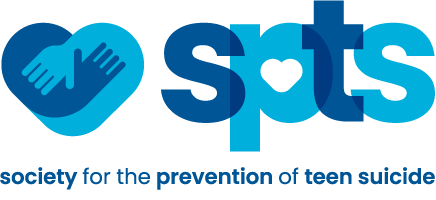Students who have made a suicide attempt are at increased risk to attempt to harm themselves again. Appropriate handling of the re-entry process following a suicide attempt is an important part of suicide prevention. School personnel can help returning students by directly involving them in planning for their return to school. This involvement helps the student to regain some sense of control.
Confidentiality is extremely important in protecting the student and enabling school personnel to provide assistance. Although necessary for effective assistance, it is often difficult to obtain information on the student’s condition. If possible, secure a signed release from parents/guardians to communicate with the student’s therapist/counselor. Meeting with parents about their child prior to his or her return to school is vital to making decisions concerning needed supports and the student’s schedule.
Any number of issues are likely to surface and will need to be considered on a case-by-case basis and addressed at the re-entry planning session. It is very likely that some school staff, the family, the mental health professional, and the student will express concerns. The more common issues are listed in this document.
- Issue: Social and peer relations
Options:
- Place the student in a school-based support group, peer helpers program, or buddy system.
- Arrange for a transfer to another school if indicated.
- Be sensitive to the need for confidentiality and how to restrict gossip.
- Issue: Transition from the hospital setting
Options:
- Visit the student in the hospital or at home to begin the re-entry process with permission from the parents/guardians.
- Consult with the student to discuss what support he or she feels is needed to make a more successful transition. Discuss what information faculty may need to facilitate a smooth re-entry.
- Request permission to attend the treatment planning meetings and the hospital discharge conference.
- Arrange for the student to work on school assignments while in the hospital.
- Include the therapist/counselor in the school re-entry planning meeting.
- Issue: Academic concerns on return to school
Options:
- Ask the student about his or her academic concerns and discuss potential options.
- Arrange tutoring from peers or teachers.
- Modify the schedule and adjust the course load to relieve stress.
- Allow makeup work to be adjusted and extended without penalty.
- Monitor the student’s progress.
- Issue: Medication
Options:
- Alert the school nurse to obtain information regarding prescribed medication and possible side effects.
- Notify teachers if significant side effects are anticipated.
- Follow the policy of having the school nurse monitor and dispense all medication taken by the student at school.
- Issue: Family concerns (denial, guilt, lack of support, social embarrassment, anxiety, )
Options:
- Schedule a family conference with designated school personnel or home-school coordinator to address concerns.
- Include parents in the re-entry planning meeting.
- Reinforce the fact that the information the school needs to assist the student is limited to facilitating optimal school adjustment and performance, and does not include personal details of emotional distress.
- Refer the family to an outside community agency or private practitioners for family counseling services.
- Include information about community agencies with a sliding fee scale.
- Issue: Behavior and attendance problems
Options:
- Meet with teachers to help them anticipate appropriate limits and consequences of behavior.
- Discuss concerns and options with the student.
- Consult with discipline administrator.
- Request daily attendance reports from the attendance office.
- Schedule home visits or regular parent conferences to review attendance and discipline records.
- Arrange for counseling for the student.
- Place the student on a sign-in/sign-out attendance sheet to be signed by the classroom teachers and returned to the attendance office at the end of the school day.
- Issue: Ongoing support*
Options:
- Assign a school liaison to meet regularly with the student at established times. Try to assign someone who already has a relationship with the student. Talk to the student about his or her adjustment.
- Maintain contact with the therapist and parents.
- Ask the student to check in with the school counselor daily/weekly.
- Utilize established support systems, student assistance teams, support groups, friends, clubs, and organizations.
- Schedule follow-up sessions with the school psychologist or home-school coordinator.
- Provide information to families regarding available community resources when school is not in session.
* In the event that a student loses a family member to suicide, school personnel should understand that suicide evokes a special, complicated grief and most of the ongoing support considerations mentioned in #7 would also apply.

